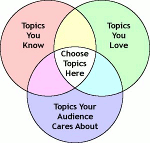In previous articles in this series, we learned how to plan and how to lead group discussions. In this article, we dig deeper into effectively managing different personalities that you will encounter as a discussion leader.
In an ideal world, everyone in your discussion group would actively participate, support the opinions of others, be respectful, and be a positive influence in all ways and at all times. The discussion would proceed swiftly and successfully towards achieving the objectives. Sadly, I have yet to lead a discussion group in such an ideal world.
In the real world, discussions can go awry in a thousand different ways. Often, the largest obstacles you will face come in the form of participants who exhibit traits of challenging personas. They may be doing so accidentally or they may be doing so deliberately; either way, you are responsible for managing these behaviors.
Continue Reading »




































